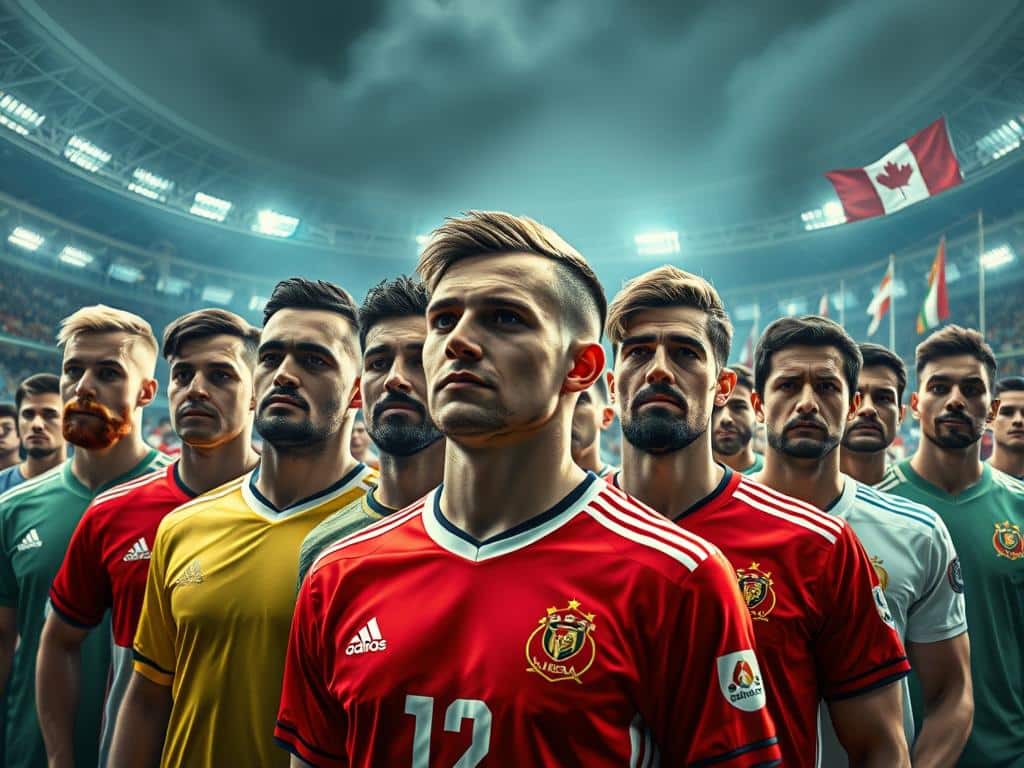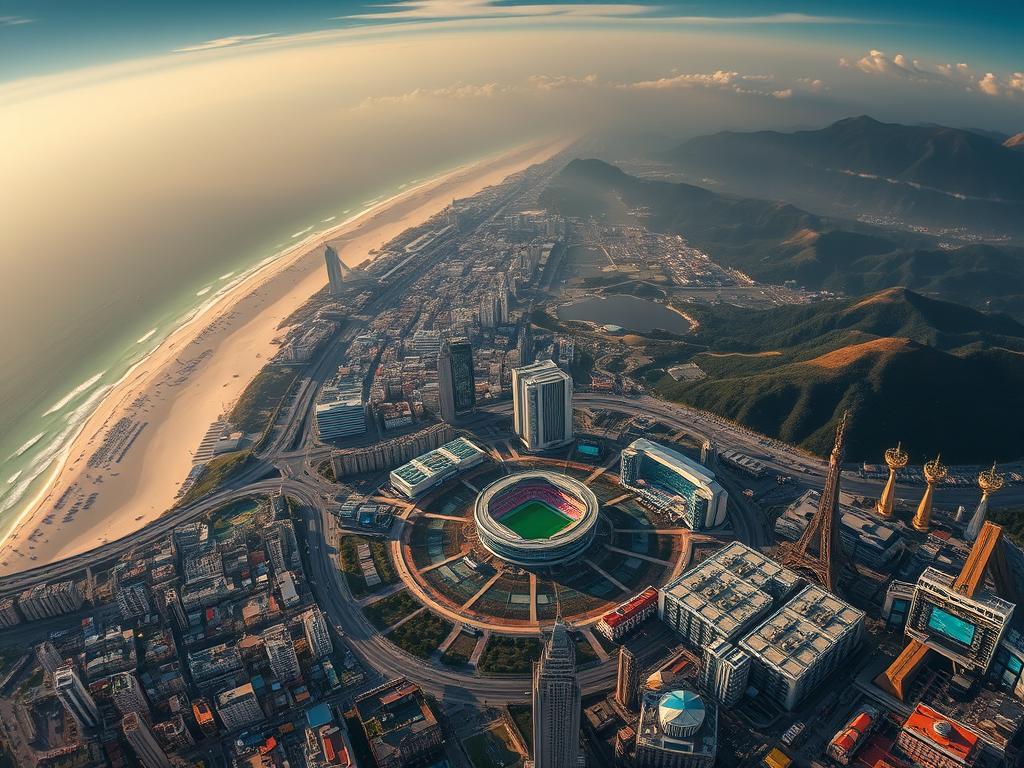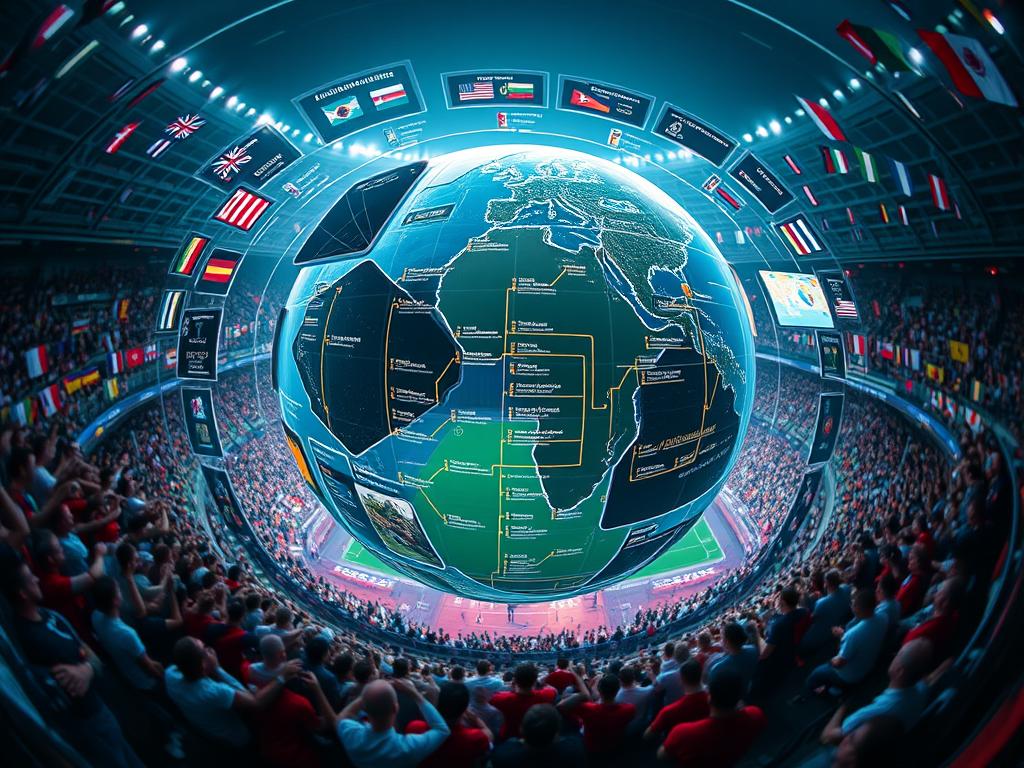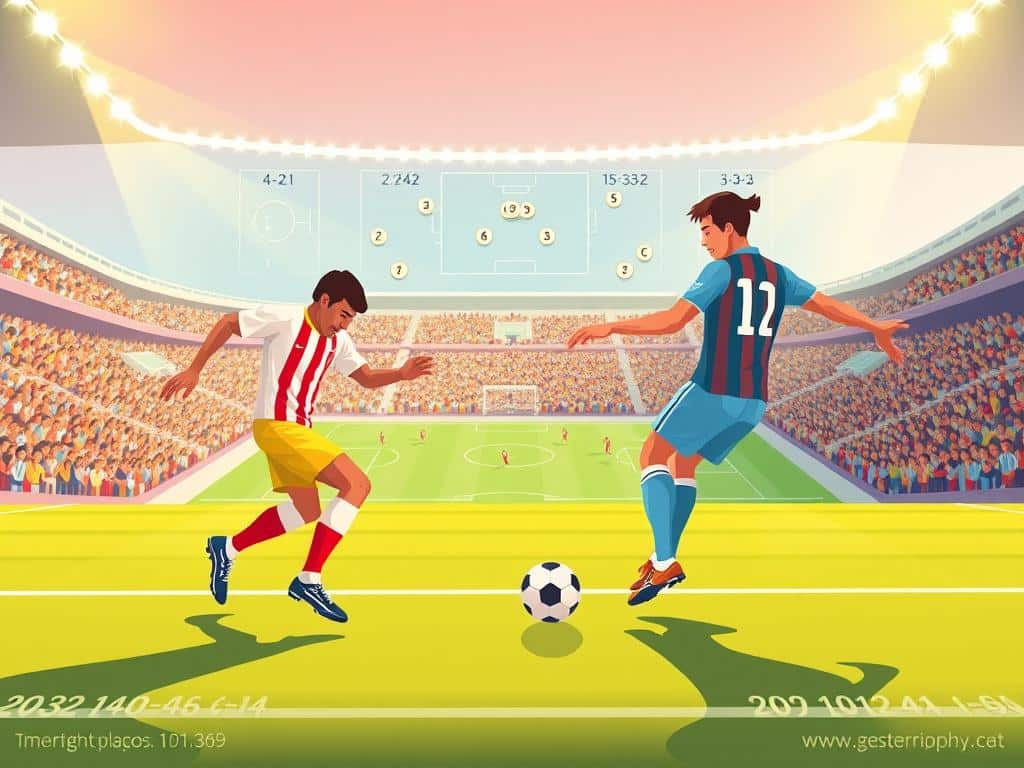Ever wondered what it takes for a national team to earn a spot in soccer’s biggest tournament? The 2026 World Cup is shaping up to be the most exciting yet, with an expanded 48-team format opening doors for underdog nations. Whether you’re a die-hard fan or new to the game, understanding the journey to the finals is thrilling.
From continental battles to dramatic playoffs, every match counts. Host nations like the USA, Mexico, and Canada get automatic bids, but others must fight through grueling qualifiers. Ready to dive into the action? Let’s break it down.
Introduction to World Cup Qualification
The road to the 2026 World Cup is packed with excitement, drama, and fierce competition. National squads from every corner of the planet vie for a coveted spot in the tournament. It’s a thrilling journey where dreams are made and hearts are broken.
What Is World Cup Qualification?
Think of it as soccer’s ultimate tryouts. Over 200 national teams compete in regional battles, with only 45 earning a ticket (excluding host nations). Matches span years, with every goal and pass carrying immense weight.
The process varies by confederation. Some rely on group stages, while others use knockout rounds. The stakes? A chance to play on the sport’s biggest stage.
Why the 2026 Format Is Unique
The 2026 World Cup breaks tradition with 48 teams—a massive jump from 32. This expansion means 16 more nations get their moment. Hosts USA, Canada, and Mexico skip qualifiers, shaking up CONCACAF’s usual format.
- New opportunities: Oceania finally gets direct entry (New Zealand secured theirs in 2024).
- High-stakes battles: Africa’s “group winners only” rule intensifies every match.
- Last-chance playoffs: March 2026 offers a final shot for four lucky teams.
From Myanmar vs. Macau’s historic opener to UEFA’s 12 groups, every match writes a new chapter. The beautiful game has never been more inclusive—or unpredictable.
How Qualification for World Cup Works: The Global Process
Soccer’s global stage just got bigger—here’s what the 48-team format means for underdogs. For the first time, 16 more nations will compete, turning regional qualifiers into battlegrounds of hope. From Asia’s doubled slots to Africa’s winner-takes-all rounds, every match matters.
More Teams, More Drama
The 2026 expansion is FIFA’s boldest move yet. Asia’s AFC now gets 8 direct spots, while Africa’s CAF sends 9 group winners straight to the finals. CONMEBOL’s marathon world cup qualifying rewards the top 6 from a 10-team gauntlet.
Even Oceania’s nations league heats up. New Zealand, long dominant, faces fierce Pacific rivals like New Caledonia. For tiny islands, this is their shot at history.
The Last-Chance Playoffs
March 2026 will decide the final six teams in a neutral-venue showdown. Two top-ranked squads skip semifinals, while others battle cross-continental foes. Imagine New Caledonia vs. a South American giant—it’s soccer’s ultimate underdog story.
- Host advantage: Playoffs unfold in USA/Mexico/Canada.
- Confederation clash: AFC, CAF, CONMEBOL, and OFC send one team each; CONCACAF sends two.
- Byes matter: FIFA rankings reward the strongest with rest.
Pack your curiosity—the road to 2026 is unlike anything we’ve seen.
Breaking Down Qualification by Confederation
The battle for World Cup spots heats up as confederations set their unique qualification paths. From Europe’s tactical group stages to South America’s endurance test, every region brings its own flavor to the race.
UEFA (Europe): Groups, Playoffs, and Key Dates
Europe’s 55 nations fight across 12 groups, with Germany, England, and France leading the charge. Ukraine and Iceland lurk as dark horses in France’s group.
Key dates:
- March 2025: Group stage climax.
- November 2025: Playoffs decide final spots.
CONMEBOL (South America): The Marathon Round-Robin
Ten teams play 18 rounds in a home-and-away gauntlet. Argentina’s already in, but Brazil’s fourth-place scramble is must-watch drama.
CONCACAF (North America): Hosts and the Road to 2026
With USA, Mexico, and Canada auto-qualified, Honduras and Costa Rica top early groups. The remaining teams battle for 3 direct slots.
AFC (Asia): Multi-Round Battles for 8 Spots
Japan and South Korea dominate, but Palestine’s rise in Group B is a feel-good story. The final round features 18 nations.
CAF (Africa): Group Winners and Playoff Drama
Morocco and Ivory Coast lead their groups, but Egypt’s clash with Burkina Faso could be decisive. Only winners advance—no second chances.
OFC (Oceania): New Zealand’s Dominance and the Playoff Path
New Zealand secured their spot early, but New Caledonia’s playoff run offers hope. One OFC team will take part in the inter-confederation playoffs.
Key Teams to Watch in 2026 Qualification
From established champions to hungry underdogs, the race for 2026 is heating up. The expanded format means more teams than ever have a shot at glory. Whether it’s Messi’s last dance or Curaçao’s Cinderella run, every match writes history.

Powerhouses Securing Their Spots Early
Argentina, led by Lionel Messi, topped CONMEBOL’s marathon qualifiers. Japan and Iran dominated Asia’s groups, while New Zealand locked Oceania’s direct entry. These nations aren’t just qualified—they’re contenders.
In Europe, Germany, France, and England rule their groups. But Ukraine’s resilience and Iceland’s grit prove even giants can stumble. One bad pass could force them into risky playoffs.
Underdogs Fighting for a Historic Chance
CONCACAF’s dark horses, like Jamaica and Panama, eye those three open spots. Curaçao’s golden generation and Guatemala’s young squad could shake things up.
Africa’s Cape Verde stunned Cameroon in Group D. Meanwhile, DR Congo and South Africa claw for their first world cup in years. Kosovo and Kazakhstan aim to debut, rewriting their soccer legacies.
New Zealand isn’t just playing—they’re proving Oceania belongs. With every goal, these teams remind us why the world cup captivates millions.
Important Dates and Milestones in the Qualification Journey
Mark your calendars—the qualification journey is packed with must-watch soccer action. Over three years, teams battle across continents, with every match shifting the path to glory. Let’s break down the can’t-miss moments.
2023-2025: The Road to the Finals
The race kicks off in November 2023 with Asia and Africa’s early preliminaries. Underdogs like Macau and Somalia get their shot first. By June 2024, CONCACAF’s Nations League heats up with Caribbean rivalries.
Europe’s giants join in September 2024. Germany, France, and England face tricky home away matches. Meanwhile, Africa’s group stage wraps by October 2025—only winners advance.
March 2026: The Final Playoffs
The last slots are decided in March 2026. CONMEBOL’s marathon ends, while UEFA’s playoffs deliver nail-biters. Four teams emerge from inter-confederation clashes.
- FIFA rankings matter: Top seeds skip playoff semifinals.
- Neutral venues: Host cities prep pitches as underdogs arrive.
- One shot: A single win books a ticket to the finals.
From first kicks to final whistles, every date writes history. Who’s ready for drama?
How Host Nations Impact Qualification
Host nations always shake up the qualification landscape—2026 is no exception. With the USA, Mexico, and Canada securing automatic berths, CONCACAF’s path to the world cup looks radically different. For other teams, this means fiercer battles for fewer spots.

USA, Mexico, and Canada’s Automatic Berths
For the first time, three hosts bypass qualifiers. Canada’s auto-entry ends a 36-year drought, while Mexico avoids the stress of the Octagonal. The USA can now focus on squad development ahead of the tournament.
Critics debate whether host privileges outweigh sporting merit. But for fans, it’s a chance to see these teams at full strength on home soil.
Changes in CONCACAF’s Qualification Structure
With three fewer spots available, the remaining groups become high-stakes battlegrounds. Jamaica and Honduras benefit from streamlined rounds, but only three squads will earn direct entry.
- Round 3 decides all: A revamped format replaces the Octagonal.
- Playoff lifeline: Two CONCACAF squads get a final shot in March 2026.
- Underdog boost: Nations like Curaçao see a clearer path.
Love it or hate it, host advantages redefine the road to 2026.
Your Complete Guide to the 2026 World Cup Race
The 2026 soccer showdown is closer than you think—don’t miss a moment. Track every clash with our interactive tables, from UEFA’s group finales to CAF’s playoffs. Bookmark November 2025 for Europe’s drama and Africa’s last-chance battles.
Analyze teams with live power rankings. Explore host city guides as North America preps for the big stage. March 2026’s global playoffs will crown the final nations—will your favorite squad make it?
Join our newsletter for real-time updates. This edition promises unforgettable stories. Ready to dive in?







